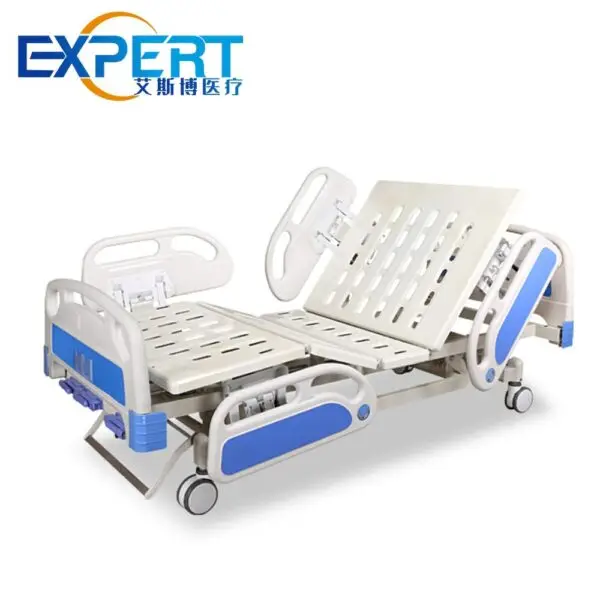Address
304 North Cardinal St.
Dorchester Center, MA 02124
Work Hours
Monday to Friday: 7AM - 7PM
Weekend: 10AM - 5PM
Before we dive into the content, I’d love for you to join me on my social media platforms where I share more insights, engage with the community, and post updates. Here’s how you can connect with me:
Facebook:https://www.facebook.com/profile.php?id=100071234835011
LinkedIn:https://www.linkedin.com/company/74943205/admin/dashboard/
YouTube:www.youtube.com/@shandongexpertmedicalequip4695
TikTok:www.tiktok.com/@expertmedical
Now, let’s get started on our journey together. I hope you find the content here insightful, engaging, and valuable.

In the dynamic landscape of healthcare, patient comfort and care remain paramount. A critical element in patient care is the hospital bed. Over the years, hospital beds have undergone significant evolution, with semi-automatic hospital beds emerging as a popular choice. These beds provide a harmonious blend of manual and automated functions, offering enhanced comfort, safety, and efficiency for both patients and healthcare providers.
This blog post will delve deep into the multifaceted benefits of semi-automatic hospital beds, exploring their key features, advantages, and their profound impact on improving patient care.
Before delving into the advantages, let’s clarify the concept of a semi-automatic hospital bed. Unlike fully manual beds that necessitate considerable physical exertion for adjustments, and fully automatic beds that are entirely controlled by electronic systems, semi-automatic beds offer a balanced approach. They incorporate electric motors for specific functions, such as height adjustment, while other functions, like backrest and leg rest adjustment, may still require manual operation. This hybrid approach strikes a balance between convenience and accessibility.
Semi-automatic hospital beds are equipped with a range of features designed to enhance patient comfort and facilitate care. Some of the key features include:









Semi-automatic hospital beds offer a multitude of benefits that contribute to improved patient care and healthcare efficiency:
When selecting a semi-automatic hospital bed, it is crucial to consider several factors to ensure the best fit for your specific needs:

| Feature | Semi-Automatic | Fully Manual | Fully Automatic |
|---|---|---|---|
| Height Adjustment | Electric | Manual | Electric |
| Backrest/Leg Rest Adjustment | Electric/Manual | Manual | Electric |
| Trendelenburg/Reverse Trendelenburg | Electric | Manual | Electric |
| Safety Features | Yes | Limited | Yes |
| Cost | Moderate | Low | High |
Semi-automatic hospital beds represent a valuable asset for healthcare facilities seeking to enhance patient comfort, improve staff efficiency, and ensure patient safety. By harmoniously blending the benefits of manual and automated functions, these beds provide a versatile and cost-effective solution. When selecting a semi-automatic hospital bed, it is essential to carefully consider the specific needs of your facility and patients.
Q: What is the difference between a semi-automatic and a fully automatic hospital bed?
A: A semi-automatic hospital bed combines manual and electric controls, while a fully automatic bed is controlled entirely by electronic systems.
Q: How do I choose the right semi-automatic hospital bed for my facility?
A: Consider factors such as patient needs, facility layout, and budget when selecting a semi-automatic hospital bed.
Q: What are the safety features of semi-automatic hospital beds?
A: Many semi-automatic beds include safety features like bed exit alarms, side rails, and central locking mechanisms.
Q: Can semi-automatic hospital beds help prevent pressure ulcers?
A: Yes, regular repositioning, made easier with electric controls, can help prevent pressure ulcers.
